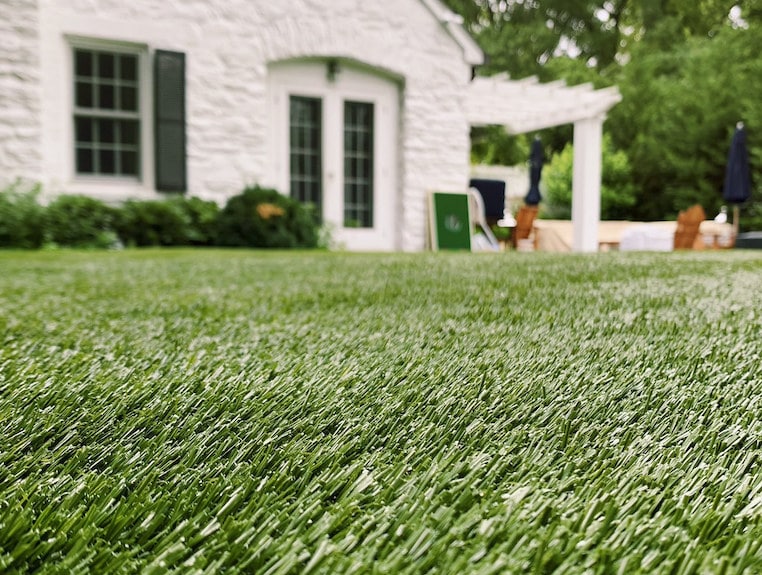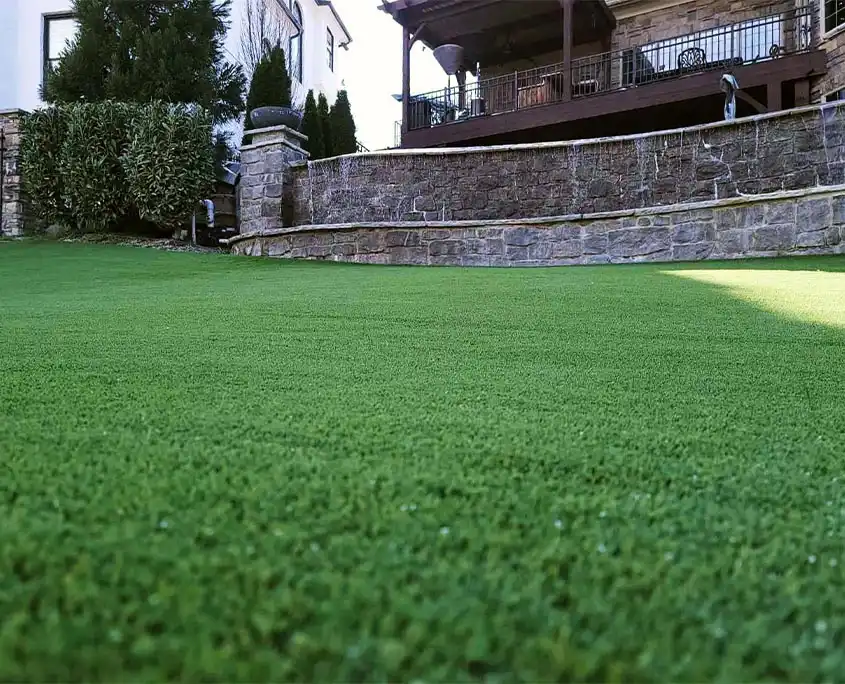Top-Rated Phoenix Turf Companies Specializing in Synthetic Grass Solutions
Top-Rated Phoenix Turf Companies Specializing in Synthetic Grass Solutions
Blog Article
Explore the Environmental Benefits of Opting for Synthetic Grass Solutions
The adoption of synthetic lawn services presents an engaging chance to attend to pressing ecological obstacles. By substantially minimizing water usage and decreasing the application of hazardous chemicals, these options not only promote lasting landscape design yet likewise secure local ecosystems.
Water Conservation Advantages
One of the most significant advantages of artificial lawn is its ability to save water. In comparison, synthetic grass does not require watering, considerably lowering the overall demand for water resources.
By getting rid of the demand for routine watering, artificial turf adds to lasting landscape methods and aids minimize the ecological influence of too much water consumption. The preservation of water expands to the decrease of runoff, which can lead to dirt erosion and river air pollution.
Furthermore, the installment of synthetic lawn allows property owners and districts to allot water sources extra successfully, concentrating on crucial usages such as drinking water and agriculture. The shift in the direction of synthetic grass not just advertises responsible water use yet likewise straightens with wider ecological objectives targeted at preserving natural deposits.
As communities significantly focus on sustainability, the water conservation benefits of synthetic grass present an engaging case for its adoption in domestic and industrial landscaping tasks.
Reduced Chemical Usage
The transition to synthetic turf considerably decreases the reliance on chemical treatments typically used in all-natural turf maintenance. Conventional grass management typically involves the application of pesticides, plant foods, and herbicides to promote growth and control parasites. These chemicals can position dangers to human wellness, neighborhood wild animals, and the atmosphere, adding to dirt and water contamination.
In contrast, artificial lawn eliminates the requirement for these dangerous compounds. As soon as mounted, it needs marginal maintenance, primarily consisting of regular cleansing and infrequent infill replenishment. This reduction in chemical use not just profits the instant environment however also adds to more comprehensive environmental security. By decreasing the release of artificial substances into the ecosystem, synthetic grass advertises healthier soil and water supply.
Moreover, the absence of chemical drainage connected with synthetic grass setups helps secure regional waterways from contamination, supporting aquatic life and maintaining biodiversity. Turf installation phoenix az. As areas increasingly focus on lasting methods, deciding for man-made turf presents a sensible option that aligns with ecological preservation goals. Via this shift, homeowner can appreciate rich eco-friendly rooms without endangering eco-friendly health and wellness, leading the way for an extra sustainable future
Lower Carbon Footprint

Moreover, the setup of synthetic grass can result in considerable water conservation. All-natural lawns call for considerable amounts of water for irrigation, which not just adds to the carbon impact associated with water extraction and treatment however likewise stress great site local water resources. On the other hand, synthetic grass needs marginal upkeep, calling for no watering, thereby substantially lowering water use and its linked energy prices.
Additionally, the durability of artificial turf adds to its reduced carbon influence. With a life-span of as much as 15 years or more, the demand for constant replacements is reduced, causing less waste and reduced power intake in production and dealing with traditional yard alternatives. In general, synthetic grass offers a sustainable alternative for environmentally conscious landscape design.
Habitat Preservation
Environment preservation is a crucial factor to consider in the debate over landscape design choices, specifically when contrasting synthetic grass to natural yard. Natural grass lawns usually call for considerable upkeep, including making use of fertilizers, pesticides, and herbicides, which can negatively affect local communities. These chemicals can leach into the soil and waterways, damaging native flora and fauna and interfering with regional habitats.
On the other hand, man-made grass presents an opportunity to reduce the ecological footprint of landscape design. By going with artificial turf, property owners can decrease the disturbance of natural habitats connected with traditional yard care methods. Synthetic grass eliminates the need for harmful chemicals, consequently shielding close-by wild animals and keeping the stability of surrounding environments. Moreover, the installment of artificial turf can cause the conversion of previous yard areas into even more biodiverse landscapes, such as pollinator gardens or indigenous plant locations, which can support regional wild animals.
Ultimately, the shift to fabricated lawn not only conserves water and reduces upkeep efforts yet also fosters an extra unified connection between human activities and the all-natural setting, promoting environment conservation in the process.
Long-Term Sustainability
Lasting sustainability is a crucial variable in reviewing the advantages of synthetic grass over standard lawn yards. Among one of the most significant advantages of artificial grass is its longevity; it can last as much as 15-20 years with very little maintenance, whereas all-natural lawn requires frequent reseeding and replacement. This durability reduces the important link demand for continuous sources, such as water, plant foods, and pesticides, which are vital for preserving a healthy turf yard.
Additionally, synthetic lawn adds to a decrease in carbon discharges connected with yard treatment equipment. Traditional grass often call for gas-powered mowers, trimmers, and blowers, every one of which add to air pollution. Artificial turf companies phoenix. In contrast, fabricated turf eliminates the demand for such equipment, promoting a cleaner environment
Furthermore, the manufacturing of man-made lawn increasingly utilizes recycled products, boosting its sustainability profile. As makers take on eco-friendly practices, the ecological impact of fabricated grass proceeds to decrease.

Verdict
The adoption of synthetic grass options offers significant ecological benefits, click now consisting of substantial water conservation, reduced reliance on hazardous chemicals, and a reduced carbon footprint. Moreover, artificial lawn aids in protecting natural habitats by minimizing land disturbance and advertising long-term sustainability via the usage of long lasting products. Jointly, these elements underscore the potential of artificial turf to add positively to environmental health and wellness and use a practical choice to conventional landscaping methods in a progressively resource-conscious globe.
In comparison, man-made turf does not need watering, considerably decreasing the total demand for water resources. By decreasing the release of synthetic compounds into the community, synthetic lawn advertises much healthier dirt and water systems.
Moreover, the installment of artificial turf can result in significant water conservation. In contrast, artificial turf requires very little maintenance, needing no watering, thus dramatically decreasing water usage and its associated energy expenses.

Report this page